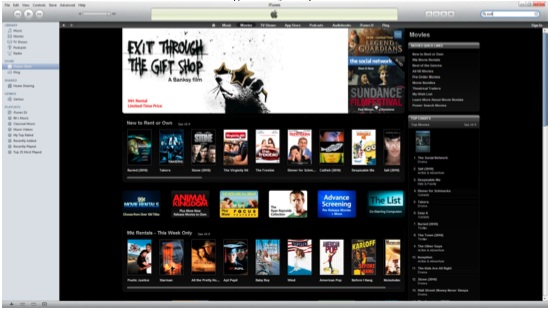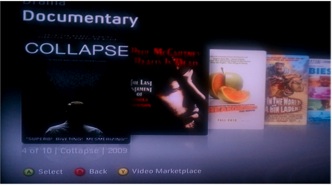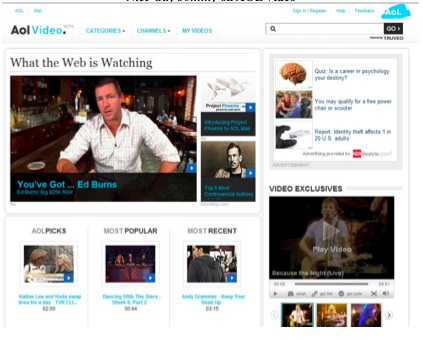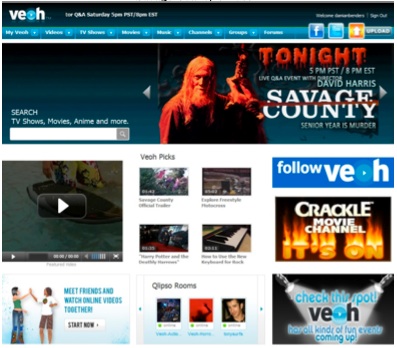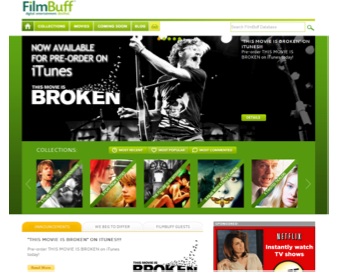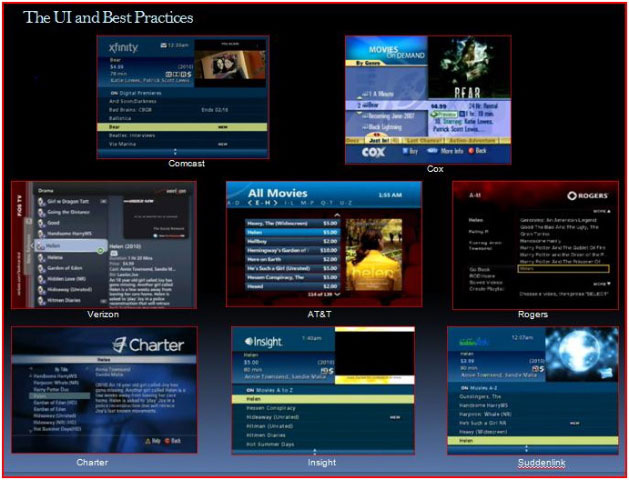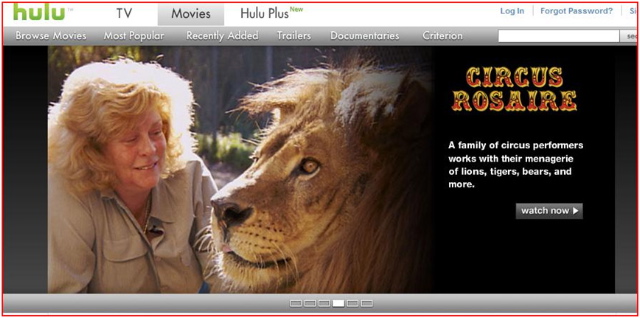
Festivals Getting into Distribution
Don’t worry folks, I have not forgotten the 3rd and final part of the blog series “IF I WERE A FILMMAKER GOING TO SUNDANCE”… it’s posting this week. But in the meantime, this just in, well actually not, it’s been brewing for a while…
Festivals getting involved in distribution is all the rage. For festivals with very strong brand recognition, it makes sense to move into this arena. We’ve been recommending it to fests for years (since 2005) and we are happy to see some, such as Sundance, are getting into the fray. It makes sense for the biggest brand festivals to be using their name recognition to bring attention to the films they screen. We at TFC have a Foreign Language Oscar Initiative with Palm Springs International, a festival known for its curation of world cinema. It makes sense that together we will bring the recognition of PSIFF chosen films to a wider audience.
The Sundance brand, being strongly recognized with consumers even outside of the independent film industry, is ideal for filmmakers to use to their distribution advantage as close to the festival as possible. With the festival getting involved in distribution, the time between festival premiere and release will only help. For festivals that do not yet have a very strong consumer brand or niche it may make less sense.
An article today in the New York Times talks about some of the fests’ distribution plans.
We’ll be drilling more into this in the coming months. For now, we wanted to address TriBeCa Films distribution.
TriBeCa Films is a for-profit company and in that way they are acting like a traditional distribution company taking rights, offering Minimum Guarantees (MGs) but charging interest, all the usual stuff. That’s the difference between TriBeCa and what Sundance has indicated its distribution will look like. The difference between it and let’s say a digital aggregator such as IndieFlix is that it has strong direct Cable VOD relationships (e.g. Comcast) and TriBeCa has a strong marketing partnership in AMEX (as noted in the article) which brings significant financial sponsorship support to marketing and we expect other partnerships are in the works. It’s been said that overages from TriBeCa Films have been quite healthy and that the Cable VOD distribution paid off.
They started with 11 films last year and they plan to increase to 26 this year. They partner with New Video for their DVD and for access on other digital platforms (iTunes, Amazon etc), an excellent partner but yet another middle man. The theatrical aspect of their distribution seems modest at this moment but that is no different than many other distributors and it may change in time.
Sundance is just starting to formulate its plans, but it is a non-profit and is not seeking to behave like a traditional distributor. Rather, their initiative will facilitate certain components of distribution access to key platforms under the strength of its brand and that would be a key difference.
The NYT piece cites Janet Pierson’s unwillingness for SXSW to join in the digital distribution business. As she rightly surmised, distribution is complicated, it is not always revenue generating, it can be cost-intensive, it can invite great scrutiny from filmmakers and industry and certainly does complicate a film festival’s activities and politics. So maybe for SXSW, it is enough to be at the top of the technology front and be a successful event for the convergence of art, technology and media happenings and leave well enough alone.
These are changing times indeed, with no shortage of options on accessing platforms where audiences could find your work. Branding and marketing are crucially important, and so on that note, until the next blog post.
Orly Ravid February 28th, 2011
Posted In: Digital Distribution, Distribution, DIY, Film Festivals, Uncategorized
Tags: Digital Distribution, film distribution, Film Festivals, independent film, VOD
We VYou, Do You?
Tomorrow, we will be taking time out of our busy schedule in the lead up to Sundance to answer any pressing questions you might have going into the festival, or any you have in general about distribution, festival strategy, what you should be aiming to get out of the festival circuit etc. In order to do this in a more personalized way and to endeavor to make human connections as much as possible, we are utilizing a new video platform called VYou. VYou allows viewers to type in questions which we will answer with video rather than text. Both the questions and the answers are archived so others can get the information at a later date. And it allows us to have a video FAQ to answer the repeat questions we get.
You can visit the site at any time to leave a question and we will periodically stop in to see what issues have come up and leave comments on them. See you tomorrow!
Orly Ravid January 13th, 2011
Posted In: Uncategorized
Using the Distributor ReportCard
Since this is the start of festival season 2011 and many of you will be evaluating the best distributors to handle your film, we want to reintroduce our Distributor ReportCard site. The idea behind it is to give filmmakers a place to share their experiences with others, both good and bad. We would also like it to be a site where distributors visit to see how they are being perceived and where they might improve.
In order to contribute a report on a listed distributor, you will need to sign in or create an account. This is a free service. The site utilizes wikispaces so you should use a unique username and password. If you are already a member of The Collaborators site, you’ll need a different username and password than your Collaborators membership. If you want to add a distributor not included on the list, please send the name and website of the distributor to danielle [at] thefilmcollaborative [dot] org. Once cataloged, the distributor name and info will be added to the DRC menu.
POSTING:
1. Log into/create a wikispacesaccount using the special username and password. If you are creating an account, a Wikispaces MY ACCOUNT page will appear. Go to MY WIKI (near upper right-hand corner) and type in FILM DISTRIBUTOR GUIDE. A small window will pop-up underneath with FILM DISTRIBUTION GUIDE. (You can later add this to your favorite wikis and not have to type in the name each time you log in. You will still need to go to MY WIKI link to select it. Click on FILM DISTRIBUTION GUIDE. The DRC front page will come up.
2. On the far LEFT-HAND SIDE column, select the DISTRIBUTOR you wish to comment on.
3. Once you are on the chosen distributor’s page, click on the DISCUSSION tab.
4. Click the NEW POST button (located just under the distributor’s name, upper left side).
5. A NEW POST window will pop-up.
6. Fill-in your SUBJECT and type your MESSAGE in the pop-up window.
7. If you want to receive an email when others respond to your post, click the box “MONITOR THIS TOPIC”. If not, proceed to #8.
8. When you are finished entering your missive, click POST.
9. Your post is complete!
We want to encourage factual and constructive comments attributed to named individuals, however we realize that sometimes people have information to share, but cannot do it under their own names. If you have information to share, but are just too uncomfortable to use your name, it is possible to send those comments to us and we will enter the information. Please address these to Danielle at the email above and she will enter in the information with the disclaimer that the information is from an individual who refuses to be named. That way those doing research will be able to better evaluate the information.
Orly Ravid January 13th, 2011
Posted In: Distribution, Distribution Platforms, Distributor ReportCard, International Sales, Uncategorized
Tags: distribution companies, Distributor ReportCard, DRC, film distribution, independent film
If I were a filmmaker going to Sundance….
* This is part 1 of 3 parts to this Sundance focused blog.
* Part 2 will be written during the festival.
* Part 3 will be written in the aftermath of the glow of the fest.
If I were a filmmaker going to Sundance, and let’s say that I had a film with no recognizable press-generating cast that would be attractive to a distribution company for a large MG… What would I do? Seriously, I asked myself that question. And I realized how tempted I would be, even I, to find some sexy publicists and rockstar agents or sales company so that I could get the hot sexy sale at Sundance and make all my dreams come true.
What can a distributor do for you that you cannot do yourself with just a little bit of money, not even a lot, and some low fee consultation? And above all, what are you giving up by not building community for your film before and during the fest, instead letting other people run your show, potentially losing out on the momentum of the festival?
The beauty of Sundance, aside from the pretty mountains and clean air and great films and the best cheese danish I have ever had (@ the Java Cow and I know I’ll regret writing this), is the focused attention of both the PRESS and the PUBLIC. Most films showing at the festival, excluding cast-driven films, would not get half (½) the attention would they were not showing at Sundance.
Let’s look at some films from Sundance last year that were in this position and the routes they took and what they may have netted. These are films that cut distribution deals of some kind and got less than wide releases from their distributors:
A Small Act (Doc): Distributed by HBO, I don’t know exact sale price but suspect it was less than $150,000 and they did not need a sales agent to do that. They are also a TFC client for festival distribution. TFC handled film festivals for the filmmaker though by the time we got involved HBO had aired the film and that hurt our festival bookings and hence diminished potential revenues to the filmmaker. The director, Jennifer Arnold, is presently closing a DVD deal as well that she got herself.
*Gasland (Doc): Distributed by HBO, TFC consulted at Sundance along with their lawyer Michael Donaldson, and they did not need anyone to help them get a good HBO deal though they did have help handling offers and pursuing interest. The deal came to them directly and would have come to them regardless. They did some self-distribution for theatrical (Box office $30,846) and festivals. The film is now available for DVD. Zipline did PR and the film got its good rightful share of it. The filmmakers received a deal that has worked out very well, with some great PR and it played lots of fests. It’s shortlisted for the Oscars too.
*Extenuating circumstances: Debra Winger executive produced this film and she definitely helped a lot. Josh Fox is a very committed activist and spokesperson of the film’s critical message so he is very embedded in the community that would be most interested in this film. It’s a great example of a film that got a lot out of being at Sundance and the filmmakers got a deal they are happy with and they probably recouped as a result given the low budget of the film.
A Film Unfinished: Distributed by Oscilloscope. I will say that $320,000 theatrical box office is very very good (I have no idea what they spent though to release the film but it’s likely some money was made on the theatrical). The film had a sales agent (CINEPHIL from Israel) and I am almost positive the MG was less than 6-figures. My judgment is that the filmmakers could have done just as well releasing on their own with just some money set aside for a booking agent and a publicist, especially for this niche. It is a doc that hits a niche audience that works consistently and is lucrative and I can’t say that the filmmakers needed a sales agent and a distributor to be in between the film and its audience. I doubt the filmmakers will make as much money as they would have handling the film on their own with just some low fee consultation.
The Dry Land – reported budget from imdb $1mil, box office $11,777 Most likely a service deal since it was theatrically released by Freestyle Releasing. Freestyle service deals are not cheap; most of their releases involve budgets of $200,000 + (though sometimes less) and most for-profit service deals involve fees of tens of thousands of dollars). Clearly not a good result here, but we assume hoping to recoup in home video.
Douchebag -Paladin is distributor and (so I assumed it was a service deal paid for by the filmmakers but the producer wrote to Ted Hope that they sold the film for more than its budget. We would love to know the details since usually Paladin does service deals and since to us that seems like quite a deal). Box office return $20,615 on a maximum of 6 screens. Also, not a good return.
Bhutto – Distributed by First Run Features. Just released December 3, to day box office $16,216, only playing 2 theaters. A large advance was not paid and most of what was accomplished could have been done by the filmmakers themselves without large percentages paid.
Taqwacores: Distributed by Strand , most likely a very small advance was given. The box office was $9,347 on 2 screens. Another example of a film that could have done this much better and faired better overall without a distributor involved. With just some low fee consultation, time and money set aside, the filmmaker would still be in control of their film and able to work up the audience.
I am not knocking these deals, simply noting that if one is to do them, one should at least cut out excess middle men and do them smartly, reserve some rights, negotiate carefully on the back end, monitor expenses, maybe even have been better off not doing these deals. It would have helped all of these films to build community around the film leading up to the festival and exit the festival with a bang, ready to reach audiences immediately. I think a lot can get lost during the time it takes for distributors to bring films to market, especially for the smaller films.
I think the decision to cut a deal with a distributor, no matter what, is emotional because even when I put myself in the filmmakers’ shoes I realized the emotional power of having an offer made to just take care of this for me. It signals that what has been made must have value and was done well. It also allows for one to not have to get hands dirty with the money stuff and the business stuff. But, if you are a filmmaker, you did choose the most expensive art medium in the world and unless you are rich or your investors don’t care about getting their money back, I want you to at least consider this: You don’t NEED traditional distribution. For MOST of you, without special connections or name cast, MOST traditional distribution will not serve you. Most distributors don’t pay enough or do enough or are fair enough, and many of them have to raise P&A anyway, or hire the same service providers you can, so do the math, think twice, and be careful. And remember, buyers are happy to buy direct, especially many TV buyers and VOD platforms, and you can get inexpensive help negotiating.
The more you can set up to do on your own the better for you and your investors in the long run. You run a risk doing nothing in terms of building community around your film or not setting up a distribution plan, having several layers of middle-men and waiting for Godot. When you do the math, the Sundance dream often connects up to cast-driven films and just a few rare gems each year, and there are those to be sure, each year, but just a very few. Most other deals you could get anyway if you wanted them, with someone on the side advising in you in fair way.
PS: Here is additional info on films from Sundance 2010:
* 3 BACKYARDS: Screen Media all rights, no verifiable release.
*12th AND DELAWARE: HBO Films, premiered on 8/02/10,currently HBO OnDemand.
* ANIMAL KINGDOM: Sony Pictures Classics, Box office $1,008,742 and this is a great example of a film that might otherwise have done little if any business were it not for Sundance.
* CATFISH: Rogue Pictures / Universal with a box office of $1,315,573 and it is definitely a great release for a doc and if the deal is good for the filmmakers then it’s a dream come true. Of course that’s an ‘If”.
* CASINO JACK AND THE UNITED STATES OF MONEY: Magnolia Pictures, $175,865 – and this is directed by Alex Gibney one of the most famous doc directors but sadly probably lost market share to the feature starring Kevin Spacey.
*EXIT THROUGH A GIFT SHOP: Producer’s Distribution Agency (a distribution company set up by John Sloss specifically to handle this film), Box office $3,291,250. I am in love with that film, and it’s to Banksy’s credit the film did what it did and some in the industry actually think it was a financially weak release given how much was spent, estimates are put at over a million. In any case, most filmmakers cannot imitate a set up that had John Sloss turn down a 7-figure advance because he wanted to handle the release himself and he did with the help of Richard Abramovitz and had the reputation and cult following of Banksy, Shepard Fairey , and Thierry Guetta.
*FAMILY AFFAIR: OWN the Oprah Winfrey Network, air-date: possibly spring.
* THE FREEBIE: PHASE4, the box office was just $16,613 the deal was allegedly worth low – mid six figures for US & Canada, all rights. The film was sold by Visit films.) Now I have inspired Phase4 to buy two films I did not take a commission on. I am not saying Visit films is not great and I am not saying it’s not great to have guidance at a festival or market especially when there is a bidding war, which there was apparently, I am just saying buyers buy films they want, not because of who is selling them. We hope the filmmakers of all these films weigh in on their overages and overall bottom line.
* FREEDOM RIDERS: PBS with an outreach campaign by American Experience, film to be shown in May on 50th anniversary of the original rides.
*GROWN UP MOVIE STAR, NO US or INTL distribution, E1 entertainment is the sales agent, Mongrel Media (distributor in Canada)
* HESHER: NewMarket, reported budget $7mil, no release info
* HAPPYTHANKYOUMOREPLEASE (DISTRIB: Anchor Bay, release was supposed to be in March but as far as we know it has not happened yet).
* THE IMPERIALISTS ARE STILL ALIVE: no info
*JEAN-MICHEL BASQUIAT: The Radiant Child (Arthouse Films (which also produced the film), Box office was $250,129. A big hit in France, what a great niche and great doc. The producers did handle their film themselves in the US.
*LAST TRAIN HOME, Zeitgeist Films, released: 9/03/10-TOTAL GROSS: $282,092
(Here is a good example of a good doc sales company from what we hear and a good US distributor and a doc that probably sold well relatively speaking).
* LOVERS OF HATE: IFC –which is primarily a VOD play and some very traditional deal terms.
* MY PERESTROIKA: no info
* THE OATH: Zeitgeist, box office $42,273
* OBSELIDIA-reported budget $500K, still with a sales agent it appears
*THE RED CHAPEL, Lorber Films, opens 12/19/10 at IFC Center, Lorber Films plans a theatrical release of the film in the U.S. and Canada, followed by television broadcast and a DVD release.
* RESTREPO (US distribution: National Geographic Entertainment, Box office $1,330,058 –another Sundance success story to be sure, assuming terms are good for the filmmakers, which we have no information about
* SYMPATHY FOR DELICIOUS: Maya Entertainment (US, media)
* SKATELAND: Freestyle Releasing in March 2011 – and this means most likely it’s a service deal and paid for by the filmmaker. I should note that sometimes Freestyle helps raise the P&A. (though I don’t know what their cut is; one day I will ask).
* TWELVE: DISTRIBUTOR is Hannover House and the box office gross was $183,920 (somewhat shocking given the cast and the director.
*UNDERTOW: (Sundance World Cinema Audience Award Winner) TFC is doing theatrical and worldwide festivals and consulted on the distribution deals. We will be covering this in a case study to be written after the release is completed.
*WASTE LAND, Arthouse Films, released 10/29/10-TOTAL GROSS: $96, 597
Arthouse Films handled the theatrical release later followed by a DVD and digital release on the Arthouse Films label in early 2011…E1 Entertainment holds the international rights and is managing worldwide sales which to date include Australia (Hopscotch), Hagi Film (Poland) and Midas Filmes (Portugal). E1 Entertainment will also distribute the movie in Canada and the UK. Downtown Filmes is the Brazilian distributor.
* WINTER’S BONE: Roadside Attractions, Box office $6,210,516, and this is a great example of a film that would have likely lingered in oblivion were it not for Sundance and the right distributor;
* Other films not listed in detail are Cyrus, The Kids Are Alright, Waiting For Superman, Splice, and The Runaways because they all have big names involved, in a few cases the deals were done before Sundance and not all of them even had great releases in the net analysis.
Orly Ravid December 21st, 2010
Posted In: Distribution, Film Festivals, Theatrical, Uncategorized
Tags: A film Unfinished, A Small Act, Bhutto, Cinephil, Debra Winger, distribution, Douchebag, DVD, First Run Features, Gasland, HBO, Jennifer Arnold, Josh Fox, Michael Donaldson, Oscilloscope, Paladin, Strand, Sundance, Taqwacores, The Dry Land
NETFLIX vs. Cable VOD & TV – It’s a question of timing
I recently posted on our Facebook page a note about the fact that one has to be mindful about when to initiate a NETFLIX VOD window. Sheri Candler asked to me blog about it. I do everything she says.
We have heard consistently from Cable VOD operators and aggregators and Broadcasters such as Showtime that the Netflix VOD window is considered a cannibalizer of revenue for Cable VOD and TV so know that before licensing rights and resolving windows. When it comes to Netflix they have gotten so successful that they are a more selective platform than Amazon. Amazon wants has recently passed the 80,000 titles mark and is racing to aggregate as many as possible. Netflix has over 100,000 titles on DVD and over 17,000 titles on its streaming service but is now getting more and more selective. Netflix SVOD rights are sold for a flat fee, at least for now. To get onto Netflix, first one has to get on their radar and into their system, and then get that demand up in their queue system to get a good fee offer. One has to then resolve everything else before risking inadvertently killing any chances of a Broadcast sale or Cable VOD distribution. However, depending on the film, you may make more money from Netflix than by selling to let’s say EPIX which will want your Netflix SVOD rights anyway. And you may make more money distributing directly then doing a small Broadcast deal or going with a distributor or aggregator that will take all your digital rights anyway. Though it should be noted most filmmakers cannot get to Netflix directly.
As with anything in film distribution, there is no one rule that applies to all films. This is a case-by-case business. Some films are big enough that one can stagger windows and monetize them all. Some films are better served by being available on all platforms at once or close to it. Some films lend themselves more to rental or ad-supported free-on-demand and others can really generate the transactional (pay per download) business.
The point of this little missive though is just to note the conflation of TV and the Internet is happening. Google TV is here and retailers, Television and device manufacturers, cable operators and telcos are all competing to aggregate and offer as much content as possible. Even print media companies are following suit wanting channels of content on their websites. And soon enough it will be less a discussion of rights and more a discussion of PAYMENT METHODS or MONETIZING METHODS and I think that will always depend on the film and its demographic targets. The options will always be: 1. Ad-Supported / Free on Demand, 2. Subscription 3. Pay Per View 4. Download to Rent, and / or 5. Download to Own. And now instead of focusing on packaged media the focus is is on whether one can play content back on as many devices as one wants and that aspect related to all the various payment methods options. The content providing industries are all racing to aggregate as much content as they can and for it to be playable across as many devices as possible and payment methods vary so far depending on service and distributor choices. Hulu (a platform backed by studios and that was once only ad-supported is now beta testing its Netflix imitation subscription model).
Brands will attract customers just like they always did when video stores were king and just like when you choose which cell phone provider to use or whom to get your Internet connection through, assuming you live in an area with choice.
The other day on a Digital Hollywood Conference panel, I learned a stat from Erik Opeka of New Video: iTunes has 130,000,000 credit cards on file. Some of you are thinking right now, “I’m in the wrong business”.
Orly Ravid October 21st, 2010
Posted In: Amazon VOD & CreateSpace, Digital Distribution, iTunes, Netflix, Uncategorized
Tags: Amazon, Digital Distribution, Digital Hollywood, Epix, Erik Opeka, film distribution, GoogleTV, Hulu, iTunes, Netflix, New Video, Orly Ravid, Sheri Candler, Showtime, SVOD, VOD
Top 5 Ways to Fail at Crowdfunding
This post originally ran on Sheri Candler Marketing and Publicity’s blog
I am prompted to write this post because I have been hit up many times lately about supporting, advising or donating to various crowdfunding initiatives. Don’t get me wrong, it isn’t quite a complaint because I have been known to support many campaigns by doing any one of these things (ask anyone else offering their advice if they have done any of these things by the way, the answer could surprise you). I do get frustrated by the ones who contact me because they have embarked without thinking through the strategy or they are very close to the time limit and very far from their goal. I thought it might be helpful to list out some ways to fail in this endeavor so you can be sure to avoid these mistakes.
1) You do not already a have a support network online. This is a biggie. I know you’re thinking Sheri, how can I already have an audience and supporters of my work when I haven’t raised the money yet to do my work? Do you have a personal identity built up? Does anyone actually know who you are yet? There are many ways to do this, starting with sharing your knowledge and experiences with people and championing others as much or more than you do yourself. This identity building takes time and should be started well in advance of asking for favors. If you don’t have a strong support network of friends, colleagues and people who enjoy the work you do, do not introduce yourself and your project by asking for money.
2) Your goal is unrealistic. At the moment, the highest amount I personally have seen raised is $30K. That was for a feature and mostly used on principal photography. Most of the other projects I have seen find success are raising under $10K. Crowdfunding is meant to get your project started, get your project finished or be used for something clearly defined like a festival run or your own screening tour. It is not going to be your only source of financing for your feature film. In time, as your audience grows, this could change for you. Unless you have the base of fans mentioned in #1, try raising $5k and see how you do.
3) You do not know who your audience is. In addition to that base of supporters, you will also need to reach those most interested in the kind of story you are telling. Many filmmakers just keep their campaigns limited to targeting other filmmakers. Folks, I don’t know any filmmakers NOT looking for money to fund their projects. While they may love and support you, you must venture out of that pool to find alternate sources for donation. I was asked whether I felt that crowfunding had reached its peak yet. Hardly! Ask any average joe on the street what crowdfunding is and you’ll get a blank stare. These are the guys you need to hit up, the ones who aren”t completely burned out by being bombarded by appeals and who might enjoy what you are doing.
4) Your campaign length is too long. Kickstarter has advised that the most successful campaigns are the shortest. Why? Because you and everyone else you know gets exhausted fundraising for 90 days. The campaign starts off strong (you hope) but somewhere around the 30 day mark it wanes big time! The momentum stalls, people get tired of shilling for you, you get tired of shilling too. Set the goal for 30 days maximum and work it nonstop during that time. Hint: that doesn’t mean your only communication is donation appeals. A reminder or two a day will suffice. The rest of the time, tell us about what you have planned for the project, comment on other conversations, share some useful links. Don’t be a complete pest!
5) Just offer tshirts and DVDs as perks. Nothing meaningful or imaginative. While I usually do not donate based on the perks, but on how well I know the people and how much I believe they can carry off the project, many people are all about the perks. If you are offering the same run of the mill stuff that can be purchased way cheaper at Walmart than at your minimum donation level, you need to think from the greedy donor perspective. I can get tshirts for $5 and a DVD of a film I have actually heard of far cheaper than a donation at the $50 mark. Get creative on what you can give donors that they will actually like, need, and most importantly, talk about. Are you a great cook? Can you do cool magic tricks? Are you a poet (I’m looking at you John Trigonis)? What can you offer your donors that is special to them and won’t cost you much if any money to manufacture?
Anyone else have some mistakes to add? Advice from those in the trenches is always appreciated.
Sheri Candler is an inbound marketing strategist who helps independent filmmakers build identities for themselves and their films. Through the use of online tools such as social networking, podcasts, blogs, online media publications and radio, she assists filmmakers in building an engaged and robust online community for their work that can be used to monetize effectively.
She can be found online at www.shericandler.com, on Twitter @shericandler and on Facebook at Sheri Candler Marketing and Publicity.
Orly Ravid October 12th, 2010
Posted In: crowdfunding, Uncategorized
Tags: audience building, crowdfunding, donors, DVD, fundraising, Kickstarter, support network
The New Independent Film Distributors’ Business Model Pt 2
Guest post by Sheri Candler, courtesy of Ted Hope’s Truly Free Film.
We ran part one highlighting the problem. Today, Sheri points to how distributors will benefit financially from the new model.
It may be that while you are in audience building mode, you will be spending more than making to develop a truly exceptional experience for your community. If you start this now before your entire business collapses, you will fare better.
-Create an online experience that makes the lives of your community better, easier, richer and be the number 1 site they visit for news, information, resources and community tailored to what interests them.
-Fill the vacuum of the lack of curation. People are confused by where to find things they like and overwhelmed by the choice. In a sea of content, be their favored destination. In this way, you can take on the likes of Netflix, a company that offers a huge range that makes finding content specific to personal interests nearly impossible because they don’t intimately know who their customers are. You will know this.
-Lock in the community by maintaining a dialog that will turn their initial attention into a revenue stream for your brand. A subscription model is what you should aspire to, but you cannot rush to that without first showing what you have to offer and reeling them in. First offer the ability to sample, share and then buy.
-Innovate in the online experiences you build to keep the community engaged and interested in making the circle bigger for you and for them. Incentivize those who are the most active at enlarging the community. Take the money you would have spent on outside marketers and use it to think of interesting incentives for your tribe.
I fear the problem for all of you will be waiting to see if another business model becomes successful before you decide to reinvent your own. This is extremely detrimental because waiting only results in being that much further behind. The first ones to embrace a new model win. It is why Netflix beat out Blockbuster. By the time Blockbuster conceded the model Netflix forged was legitimate, they could never catch up. Entrenched companies usually misjudge the speed with which change happens. Now is the time.
Sheri Candler is an inbound marketing strategist who helps independent filmmakers build identities for themselves and their films. Through the use of online tools such as social networking, podcasts, blogs, online media publications and radio, she assists filmmakers in building an engaged and robust online community for their work that can be used to monetize effectively.
She can be found online at www.shericandler.com, on Twitter @shericandler and on Facebook at Sheri Candler Marketing and Publicity.
Orly Ravid October 12th, 2010
Posted In: Distribution Platforms, DIY, Uncategorized
Tags: community building, film distribution, independent film, Sheri Candler, subscription models
The New Independent Film Distributors’ Business Model (Pt. 1 of 2)
courtesy of Truly Free Film Posted: 29 Sep 2010 05:30 AM PDT
Guest post by Sheri Candler.
In this second post, I want to focus on how to rehabilitate the film distribution entities so that they may continue to exist. I know what you are thinking “What’s she on about? We’re fine. We survived the latest shake out and are all the stronger for having less competition.” I am here to tell you that is fallacy. The old ways of bringing films to market are fading fast and it is time to reinvent your business. I want to acknowledge my gurus Gerd Leonhard, Seth Godin and Clay Shirky (though he is more my go to guy on all things having to do with immersive storytelling and audience collaboration) for being a constant source of inspiration for me in looking toward the future of media.
When Ted announced on his Facebook page that he would take part in a panel discussion at the upcoming Woodstock Film Festival concerning the new distribution paradigms, I had to look at who would be involved in this discussion. What people and companies would be taking part who are practicing radically changed business models for film distribution? It was as I thought; none. I posted a link on his page (http://www.techdirt.com/articles/20100326/1452138737.shtml) asking all involved in the discussion to read it and then talk about how they see the new paradigms. I don’t know if anyone did, but I did get a response from Dylan Marchetti from Variance Films explaining to me how his company functions to actively engage audiences for films they’ve booked in the theater. It was a lengthy exchange that resulted in my writing this post. I don’t think he read the article before he spoke because the point of that piece was to inform on how businesses need to form ecosystems around their companies, not continue only to sell copies of the content they distribute. Distribution companies should not be focused on selling copies, either for viewing or for owning. They should be selling access, creating networks of devoted fans around their brand and developing customized experiences instead. In other words, selling things that cannot be copied. This means they must first gather and cultivate a community of engaged followers and then develop, acquire, produce, and source material with only these people in mind.
Of the companies taking part in the Woodstock panel, I would say only Cinetic with their Film Buff organization has started with the potential to do this, but rather than building an engagement platform, they have merely built another online distribution portal (like so many others in existence that consumers have never heard of) to put copies out on the internet. Actually you can’t see any of the films on the site, it just directs you to their existence on VOD channels. Their “community” engagement is only a call for an email address so that they may send marketing messages. What is communal about that? What connection would a consumer have to the company itself besides advertising? None. Cinetic has no idea who these people are, what drives them, motivates them, interests them. It is not fair to pick only on Cinetic, I can’t think of a single distributor currently connecting directly with audience who can answer those questions. Troma comes to mind as a distributor with a very clear brand identity but even they are not directly in dialog with their audience. All current distributors are far too dependent on push marketing, usually hired from outside the company, and sourcing films purely on guesses based on audience reactions at festivals , favorable press or from hottest trends in market research. Every investment prospectus will tell you future earnings are not indicative of past performance, so why is that how decisions are continually being made?
What would I suggest for these companies? First, a total rethink of what business they’re in. Distribution of goods is no longer needed from you. You should not think of yourselves in the film distribution business because distribution has become easy to access by anyone online. (I know Dylan, you’re not online, but art house theater days are numbered too). Attention getting is now your main role. But from whom? If you don’t have a following as a company, a deep relationship with a community, how will you get attention and keep it? By building a tribe around the people in your company and, in turn, the company brand itself. This starts by identifying what kind of group you appeal to or want to appeal to, actively seeking them out and forging those deep connections. At first, this will mean attracting people through outside means, appealing through media and various outside groups to introduce yourself. Eventually the effort to enlarge the circle will be done by the community members, but until you have one, you must do that work.
Often, in a rush to monetize, companies jump right over the relationship building. The dismal failure of paywalls in newspaper circles only serves to prove my point. They did not build up an engaged community first, and then ask for payment. They falsely thought that their paper subscribers would be willing to continue the previous paid relationship even after it was possible to get most of the news stories from aggregators for free online. There is a great video from Jeff Jarvis explaining the new business models for newpapers here (http://www.youtube.com/watch?v=Jsb9NfJmqPY&) and lots can be gleaned from it for all corporate endeavors.
The reinvention
“The future leaders in business will be connectors, not directors”-Gerd Leonhard
The new model will be to build and foster a community around the brand as a company and to be in the entertainment fulfillment business. This community will have interests that the company can fulfill and that is the company’s ONLY function. To try and serve a well balanced diet of wide ranging content is to spread too thin and attract no one. Mass is not your target.
You will be a resource to your community not only in entertainment but in anything that interests them. This means you MUST know what “that” is. Is it books, is it music, events, clothes, games, causes, other similar tribes? These will be your other revenue sources as you create a network of interconnection with other companies who have their own niches, their own tribes. Also, consider enabling community members to profit in what you have sourced, to be affiliates and to create networks of their own. The network will feed each other spreading the brand even further.A key part of your site will be to connect your community to each other. Some companies have sites where they connect to the user, but they don’t allow for intraconnection and some networking platforms are merely housed on a company website but members are never engaged by the company, merely left to use the tools as they see fit. Listening and collaboration will be cornerstones for this model to work. This isn’t work to be left to interns, by the way, but by those in power within the company.
You will also partner with other tribes of like minded individuals. Through these interactions, you tribe influence grows. There is no need for shouting out messages, gaining favorable PR placement, buying media for attention or forcing members to spread the word. If you are fulfilling their needs admirably, they will do it. You will however, generously reward those members in your community who do enlarge your circle. Instead of paying large amounts of money to outside companies to get “buzz” and “traffic,” you will invest that money in building experiences tailor made for your community. Development of experiences can only be done from active participation in the community and collaboration with them.
This model is far simpler to run as you won’t be going for masses, you will only cultivate your community. It will be labor intensive work, but not prohibitively expensive. You will need to develop tools so that the tribe members can speak to each other and so that they can spread the word to their friends easily. You should be facilitating sharability at all times, not closing it off and being insular.
The filmmaker/artist whose content you will source (not acquire as creators will have an equal partnership in your tribe) will be encouraged to participate with the community. In fact, if they will not, then their work is not very attractive to your community. Engagement at all times is key, this is no place for egos.
Tomorrow: How To Make Money With The New Model!
Sheri Candler is an inbound marketing strategist who helps independent filmmakers build identities for themselves and their films. Through the use of online tools such as social networking, podcasts, blogs, online media publications and radio, she assists filmmakers in building an engaged and robust online community for their work that can be used to monetize effectively.
She can be found online at www.shericandler.com, on Twitter @shericandler and on Facebook at Sheri Candler Marketing and Publicity.
Orly Ravid September 30th, 2010
Posted In: Uncategorized
GLOBAL SHORTS INITIATIVE / What to do for shorts!
We have been slowly communicating about our GLOBAL SHORTS INITIATIVE. There are companies such as Ouat Media and Shorts International and consultants whose business it is to focus on short films. When shorts filmmakers approach us we do the best we can to educate them about any deals they’ve been presented with and otherwise we refer them onward to shorts specialists. We at The Film Collaborative focus on shorts to the extent that certain niches that fulfill our mission but leave much of the more commercial work to the shorts experts. We are fulfilling our mission of serving under-served audiences and of helping filmmakers not get screwed. We also encourage filmmakers to organize and aggregate themselves and follow our example if one wishes.
We do have a GLOBAL SHORTS INITIATIVE and it starts with an LGBT program. Here is how it works:
1. It’s non-exclusive and we do not take rights, as you all know by now.
We’re also the most transparent distributor I know of. Wait till we start publishing numbers and posting a graph on our site about revenues and allocations, with filmmakers permission only though of course.
2. First window of the Global Shorts Initiative is a 6-month exclusive window with our mobile / IFOD partner BABELGUM
Babelgum. The revenue is via an ad-supported model (ad and sponsor driven). Babelgum has been a great platform for some of the films we have worked with. They pay 50% of net revenues (very modest expenses and capped) and we will take a 15% fee for marketing and putting this together. Festivals are not a factor in the exclusivity and we are timing everything to accord with each filmmaker’s overall distribution strategy. Lastly, Geo-Filtering is possible if necessary except for in US. This will start end of this year / beginning of next (we are just coordinating festival windows for our filmmakers)
3. Then we are doing a few other components all at once (May 2011):
An iPhone App. It will be worldwide to the extent that iTunes is. If a short film needs to be geo-filtered it can be. The App will be free. Each short can be priced at say $1.99 (less or more if a filmmaker wants that). We receive 55% of the gross revenues (after Apple and the developer take their fees). We are taking a maximum of 10% of this revenue and that is to cover our time in servicing this and marketing too (5% Fee & 5% max for marketing).
We will also have an HD-Rental Channel on YOUTUBE and the details of that will be resolved soon but filmmakers can select their own pricing.
4. DVD release in US & Canada through our esteemed home video (till its dead) partner First Run Features . As is quite typical, they will remit 25% of the Gross revenues to the filmmakers on a pro-rated basis, no deductions. The DVD would be made available on Netflix and Amazon etc.
5. We do not compete with Ouat Media or Shorts International or anyone else for that matter, meaning other companies license shorts to television stations in Europe and to airlines and we do not do any of that and do not intend to. We do recommend one get several references before signing with any shorts distributor.
The initiative however is meant to be a supplement to anything one may doing with your short yourself or via another company. There are fewer buyers buying shorts (though we also for free connect shorts filmmakers to our buyers who do buy shorts) and for the ones that are, the revenues seem to be fewer than once was the case. We are doing the best we can to offer a supplementary solution at least for some.
We are doing what we can to support shorts filmmakers and enhance their opportunities to connect with audiences and of course to recoup their investments. We’ll keep everyone posted on the success of this initiative. Our newsletter has showcased most of the films that will be part of the initial initiative launch.
We are thrilled to have added Kim Adelman to our our Advisory Board so we can be sure to be doing this rights, and of course we invite feedback from all.
Kim Adelman is the author of Making it Big in Shorts: The Ultimate Filmmaker’s Guide to Short Films, the 2nd edition of was published July 2009. She also reports on short films for indieWIRE and co-programs the American Cinematheque’s Focus on Female Directors screening series. Ms. Adelman currently teaches Making and Marketing the Short Film and Low Budget Filmmaking at UCLA Extension and has conducted short filmmaking workshops throughout the United States, Canada, New Zealand. She also produced 14 DVD compilations of short films released by Warner Home Video under the series titles Short 1 – 11 and International Release 1 -3. Previously, Ms. Adelman launched the Fox Movie Channel’s short film program. The 19 short films she produced for Fox won 30+ awards and played over 150 film festivals worldwide, including the Sundance Film Festival four years in a row.
Stay tuned folks!
Orly Ravid September 27th, 2010
Posted In: Digital Distribution, DIY, SHORT FILMS, Uncategorized
